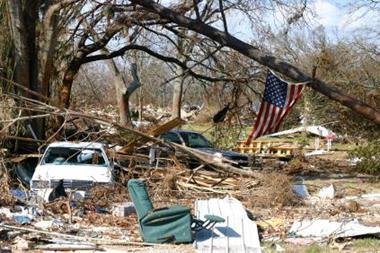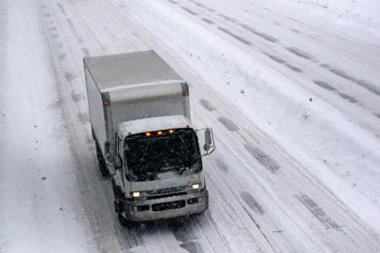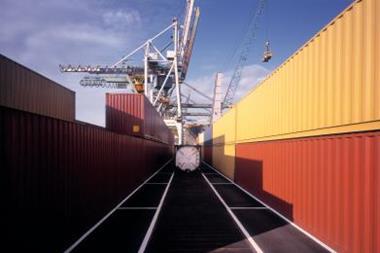Although the history of government insurance purchase for catastrophe risks is much shorter than that of the private sector, it is growing fast, as evidenced by the number of new schemes worldwide and the interest they have sparked in neighbouring countries. There are also clear trends in the development of public sponsored cat schemes. By Matthew Twilley
Public authorities around the world have always known that, for social and political reasons, they are the insurer of last resort - the backstop in American terminology. Over the last 60 years they have been creating pools to formalise, minimise and usually privatise their responsibility for natural catastrophes.
The main reason why governments sponsor catastrophe insurance schemes is to reduce their outlay if there is a disaster. Successfully established, such schemes usually also provide ancillary benefits, including:
Increased penetration of insurance in the country
Increased insurance purchase, such as a pool, expands penetration measured as a percentage of GDP, but government pools also tend to drive other insurance purchases, according to Swiss Re's economic forum in December 2006. This is because they generally involve educating the public and increasing risk awareness, which encourage independent insurance purchase.
Improvements in building codes and risk management
This is possibly the most important benefit from government schemes, but it can also take time to manifest itself. Because countries which introduce such schemes are prone to natural catastrophes, the managers usually try to reduce the liabilities. They can do this by lobbying for more stringent building codes or providing incentives to policyholders, such as premium reductions for higher quality buildings or retrofitted improvements.
Creation or improvement of catastrophe modelling capabilities in the country
One of the usual requirements for a pool is a model to calculate the exposure of the scheme. The model can also be made available for domestic insurance companies to apply to their own portfolios, thus improving the efficiency of their reinsurance purchasing and reducing their risk of failure.
Inspiration to neighbouring countries
Because state sponsored schemes are usually high profile, they can make other governments aware of the insurance possibilities.
Negative side effects
Although they are very beneficial when correctly specified and implemented, public catastrophe schemes can also have negative side effects.
Anti-selection: Any scheme where participation is voluntary is likely to suffer from anti-selection, while compulsory schemes will be viewed as a tax. Taxes are especially politically sensitive in countries with low to medium GDP or in countries where the risk is not evenly spread among the population. Even in countries where the scheme is compulsory, lack of effective enforcement by the government means that penetration rarely exceeds 25%.
For example, where the hazard, such as US windstorm, is very unevenly distributed, there can be serious discontent with pricing reductions which are not justified by the risk. In November 2006, the US Insurance Research Council found that "63% of those from interior counties and non-coastal states believe policyholder subsidies for wind damage coverage in coastal areas are unfair."
Political interference: Political involvement can undermine the scheme's initial purpose. The US Insurance Information Institute (III) argues that this is the case with some states' fair access to insurance requirements (FAIR), beach and windstorm plans, and the state run insurance companies in Florida and Louisiana. In June 2007, the III published a paper detailing the enormously increasing exposures and deteriorating loss records of public sponsored catastrophe schemes. It said that they had gone from "markets of last resort to markets of first choice".
Not only does this trend increase the state's burden in the event of a catastrophe, but it also sets up a vicious circle where private insurers cannot compete with the state schemes. They withdraw from the market, and the public scheme's liability increases further.
Locations and types of pool
There are significant established natural catastrophe schemes in France, Japan, Malaysia, New Zealand, Norway, Spain, Switzerland, Taiwan and the United States, with several additional pools more recently established or under consideration.
There are many different variations upon the theme: two of the most significant relate to the degree of compulsion of the pool and the state's relationship with the scheme. These two issues alone will have most effect on the size and viability of the pool, and are also among the most sensitive, especially in political terms.
If the state backs the scheme with an unlimited guarantee, the government has not completely rid itself of the burden of being the (re)insurer of last resort. Even though the risk may have been privatised up to a point, the state may still have to pay out above that point and for the uninsured. On the other hand, if the scheme is not backed by the government, it could fail in the event of a catastrophe and the government would have an unbudgeted responsibility to help needy policyholders.
In addition, if the scheme is only very lightly collateralised at the start, it may have enormous exposures from inception, but little in the way of funds. Unfortunately, this situation is quite common with new schemes, as they are often established in the wake of a disaster when there is most public interest and desire but when the government is least able to provide sufficient funding.
Figure 2 shows how various national earthquake and flood schemes are positioned in terms of their compulsion and state guarantee:
There are other important differences in government catastrophe schemes, although they are arguably not as significant as the two main variations discussed above. In brief:
* Some buy reinsurance to privatise the risk (ACIP in Algeria); others do not (CCR in France).
* Some provide cover for ordinary insurable perils (TREIF in Taiwan);others cover uninsurable perils (TRIA/TREIA in the United States).
* Some are run by private companies (TCIP), others by the state itself (JER in Japan).
* Some have no state guarantee (MAIPARK in Indonesia); others are self-contained (CCR in France).
These different characteristics all depend on the original intentions of the government when establishing the scheme and can change over time. For example, the New Zealand EQC initially covered earthquake and war damage, but it subsequently changed; coverage for war damage was removed, and protection was extended to include other natural catastrophes.
Future schemes
There are pools in formation or under discussion in Albania, Azerbaijan, Bulgaria, Georgia, Greece, India, Iran and Pakistan. Figure 3 shows the new potential schemes included.
As Figure 4 from Munich Re's online natural catastrophe service (NATHAN) shows, the list of pools under consideration obviously correlates closely with the countries exposed to significant earthquake and storm hazards.
Two other significant correlations are worthy of consideration. The first is that countries with high natural catastrophe exposure and low to medium GDP per capita or, more significantly, the per capital comparative value of the country's GDP in terms of a basket of goods and services, known as purchasing power parity (PPP), feature strongly in the list. See Figure 5.
The second correlation is that the countries considering public sponsored insurance schemes generally also have a low non-life insurance penetration, measured as a percentage of GDP.
It is also clear that there are general geographical groupings of the countries where new schemes are proposed. They are for the most part in central and eastern Europe, the Middle East and southern Asia, although there is activity in other parts of the world such as the new Caribbean Catastrophe Risk Insurance Facility (CCRIF). There is often a regional pattern to the development of pools, with governments expressing greater interest when a neighbouring country, especially one facing similar perils and with a similar social and political outlook, establishes such a scheme.
Conclusion
Public sponsored catastrophe schemes must be very clearly and carefully established. They can harm the country's private insurance market and can increase the burden for the government if they are poorly arranged or mismanaged. On the other hand, if implemented well, such schemes can bring enormous direct and indirect benefits to the host countries and reduce previously unquantified government liabilities.
Postscript
Matthew Twilley is a divisional director at Willis Re in London. He specialises in government pools with particular emphasis on the Middle East and Asia.
Email: twilleym@willis.com
Website: www.willis.com



















No comments yet